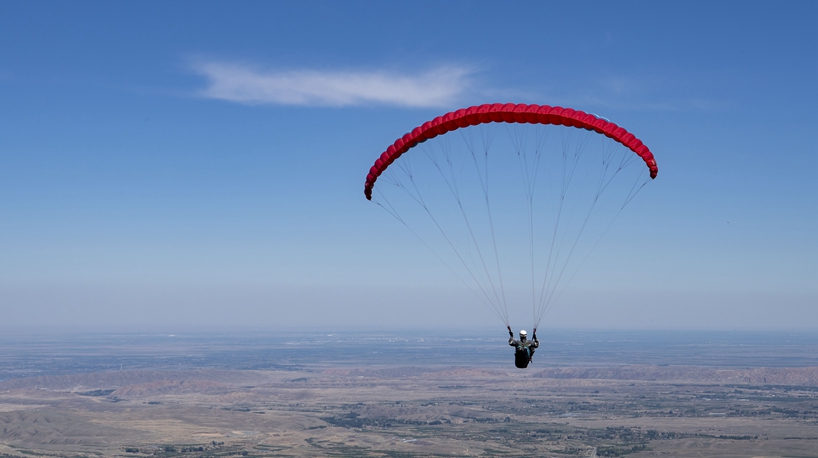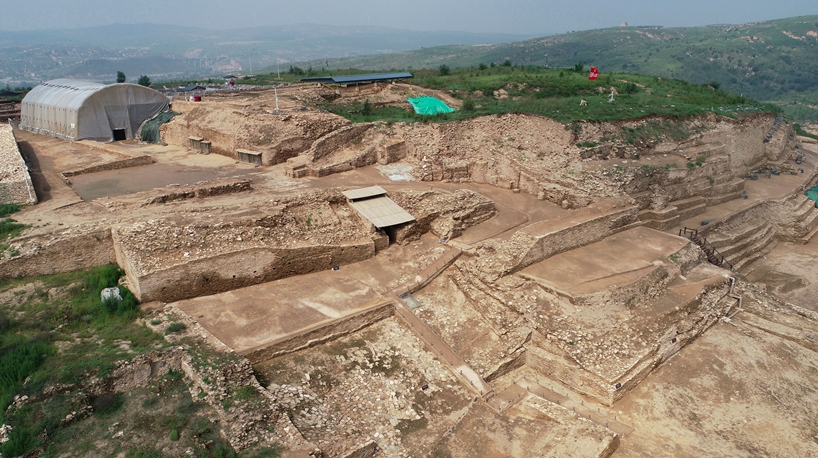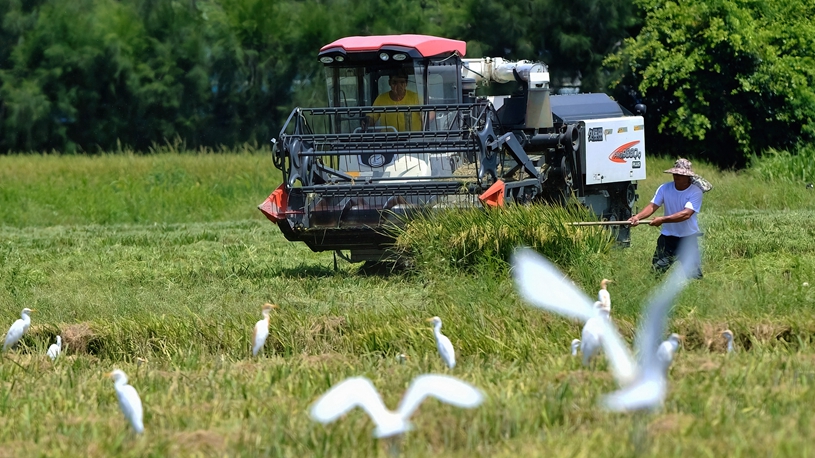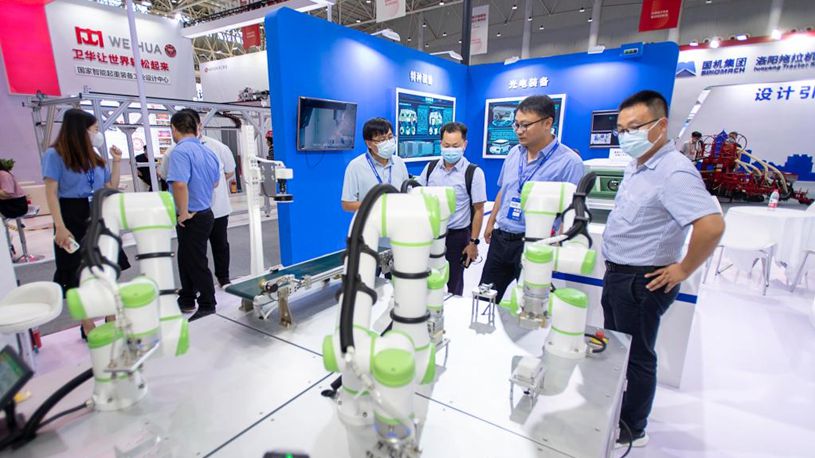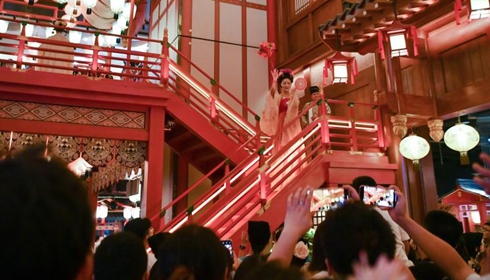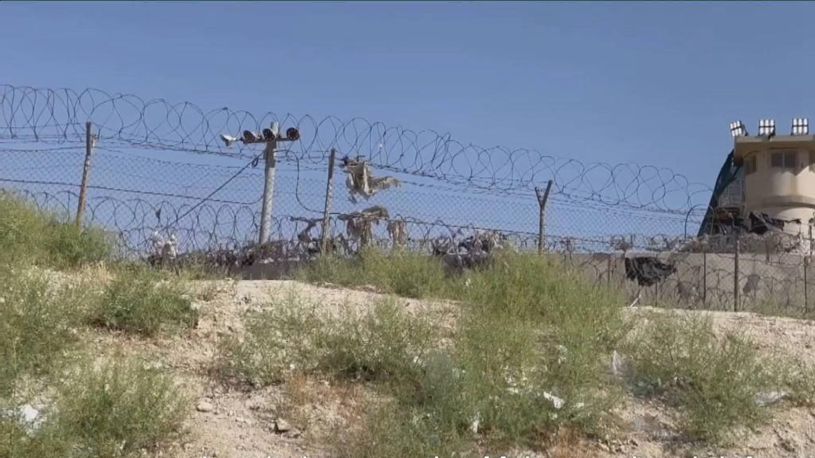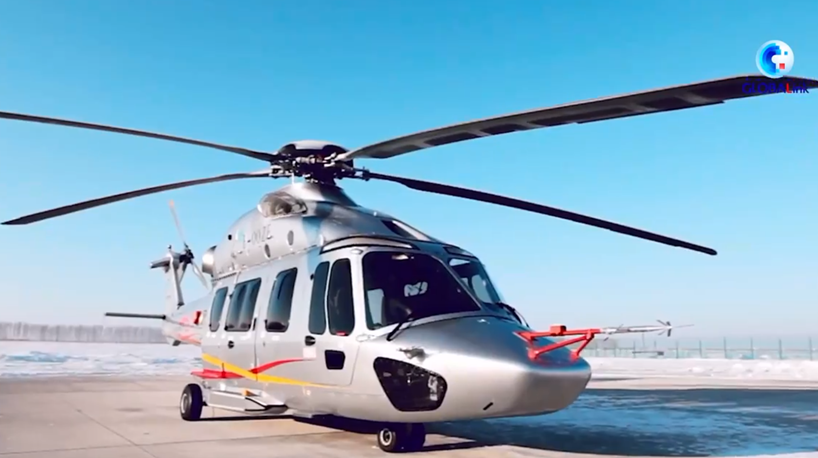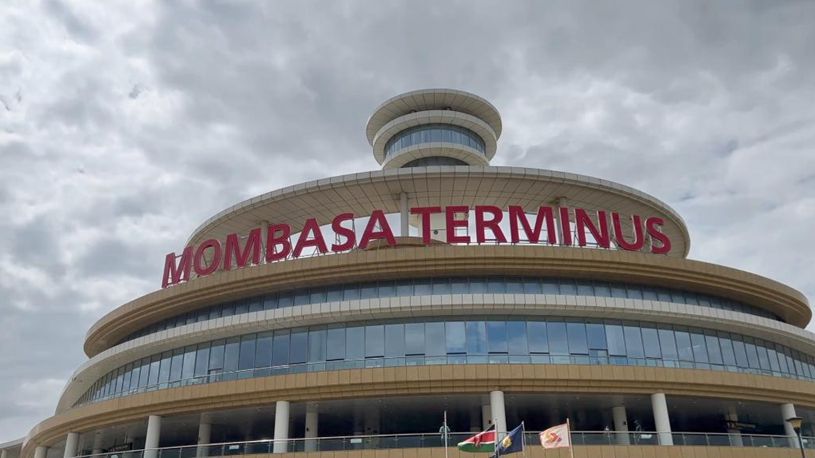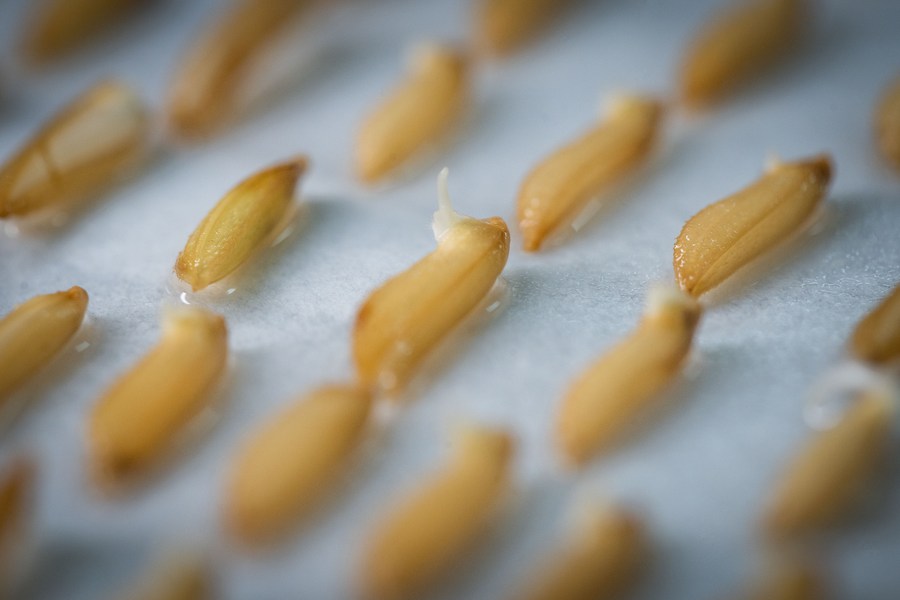
Photo taken on Feb. 26, 2021 shows sprouting rice seeds that had made a round trip to the moon aboard the Chang'e-5 probe at the greenhouse of the National Engineering Research Center of Plant Space Breeding of South China Agricultural University in Guangzhou, south China's Guangdong Province. (Photo by Zhang Ziwang/Xinhua)
BEIJING, Aug. 12 (Xinhua) -- When China's Shenzhou-14 spaceship returns to Earth late this year, it will bring home some unusual packages -- brewer's yeast grown in space.
It will be part of the harvest of a 6-month-long breeding experiment aboard the Tiangong space station, which is under construction. Scientists say that the microorganism, exposed to deep space, will induce genetic mutations that may create superior strains on the ground.
Alongside the yeast samples, the "passengers" of China's latest long-duration space journey also include seeds of rice, soybeans, vegetables, and a variety of bacterial species that are essential in food preservation. They were selected by the Beijing Capital Agribusiness & Foods Group. The company's goal is to carry plants and microorganisms into orbit, recover them, and use them to provide fine quality food and beverages.
Space breeding refers to exposing seeds and strains to cosmic radiation and microgravity during a spaceflight mission to mutate their genes.
When the space-bred samples are brought back to Earth, scientists will examine and evaluate their mutations. Compared with natural bred types, some are positive, conferring properties favored by farmers, such as greater yields, shorter growth periods, and better resistance to diseases.
More importantly, space food is safe for human consumption. Zhao Hui, an expert with the China Academy of Space Technology, said that unlike genetically modified food transferring genes from other species, space-bred seeds and strains undergo a mutation of their own genes only.
Generating unexpected desirable traits is another feature. Liang Sili, an academician with the Chinese Academy of Sciences, researched the technology after tasting a space-bred 500-gram green pepper.
"It contains more vitamins than conventional types. And it's very delicious," Liang said.
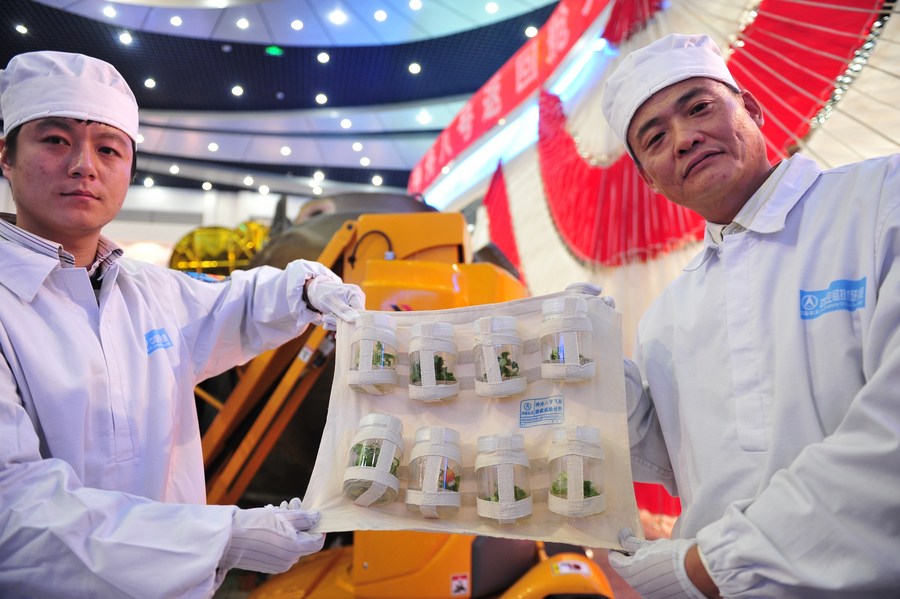
Researchers demonstrate a set of space flowering and fructification experiment devices retrieved from the re-entry capsule of China's unmanned spacecraft Shenzhou-8 in Beijing, capital of China, Nov. 21, 2011.(Xinhua/Yang Guang)
China has been a pioneering country seeking to apply the technology of space breeding to agricultural farming on the ground.
The world's most populous country conducted its first space breeding experiment in 1987, launching packets of seeds on a satellite and returning them to Earth after exposure to cosmic radiation.
Since then, hundreds of plant species seeds have traveled with dozens of the country's retrievable satellites and Shenzhou spaceships.
Over the past three decades, China's space breeding program has helped produce more than 300 crop varieties and 700 new types of plants, ranging from vegetables, fruits, and flowers. The total planting area has exceeded 2.8 million hectares, roughly the size of Massachusetts in the United States.
It has increased grain production by 1.6 billion kg and generated economic benefits worth over 240 billion yuan (about 35.6 billion U.S. dollars), said Zhao, also the secretary general of China's Space Breeding Industry Innovation Alliance.
In central Henan Province, Liu Shunde is a farmer who has benefited from space technology. In 2016, he sent 13-gram seeds of leek into orbit for 12 days aboard a recoverable science satellite.
After four years of ground-based research, the space-induced leek mutations created a new variety with stronger resistance to coldness and disease. Liu's business has since then developed fast, with larger planting areas, higher yields, and more income.
Similar success stories have been reported nationwide, as space breeding has represented an innovative approach to helping Chinese farmers improve their productivity.
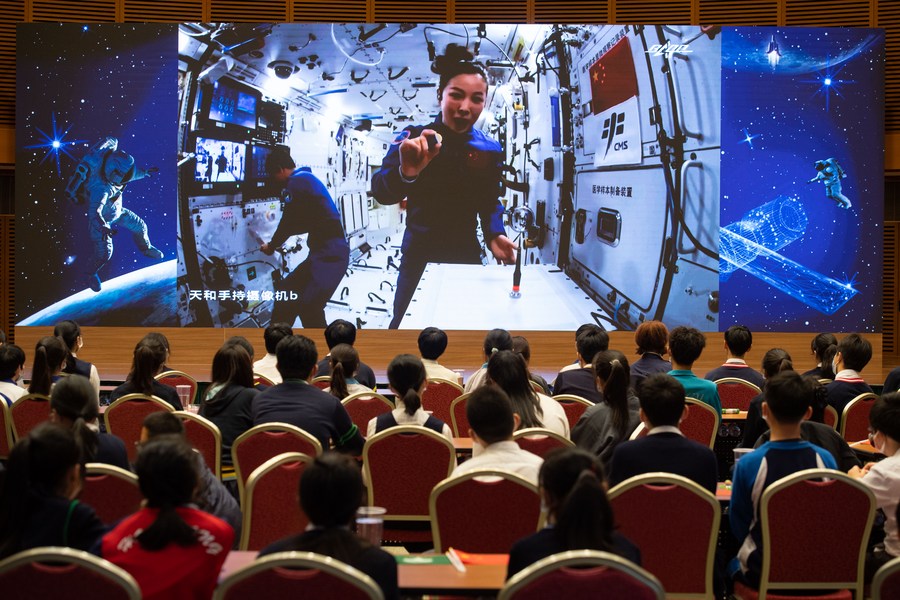
Students attend a live class given by the Shenzhou-13 crew members, in south China's Macao, Dec. 9, 2021. The first live class from China's space station was given by Shenzhou-13 crew members Zhai Zhigang, Wang Yaping and Ye Guangfu to students on Earth. (Xinhua/Cheong Kam Ka)
The space breeding tests have been conducted in all the flight missions during the essential technology verification phase of China's space station project. Thousands of crop seeds and microorganisms were carried into space and brought back to Earth by Shenzhou-12 and Shenzhou-13 crews.
Taikonauts aboard the Shenzhou-14, launched on June 5, will perform more such breeding experiments there.
Zhao believed that with the progress of the space industry, humans would bring more seeds to space and create a "space oasis" in the future, which may offer new solutions for global agricultural development, biodiversity protection, as well as for climate change. ■

